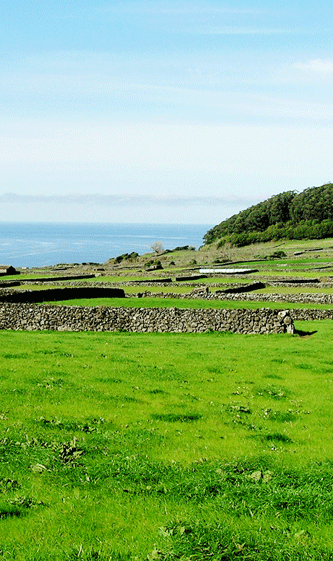 COUNTRY OF ORIGIN
COUNTRY OF ORIGINGrazing dairy cows, a model of sustainable agriculture
International interest
Although the Azores enjoy particularly favourable weather conditions (temperate climate, mean average temperature that remains fairly constant through the winter and summer, and rainfall that is spread evenly throughout the year), there are many countries that might be interested in applying this agricultural model, either in its entirety or in part.
The grazing dairy cattle management model is typically used in New Zealand (an industrialised country with the lowest milk prices), and is traditionally used in other countries with a continental climate.
In countries with a Mediterranean climate, transhumance used to be common: cows grazed for most of the year in low-lying pastures to be taken in the summer to pastures at high altitudes where grass could still be found. In the autumn, when the grass once again began to grow in low-lying areas, the animals were driven back.
This type of management, in which pasture provides dairy cattle with most of their food requirements, is once again arousing interest in many breeders, since it provides the prospect of reduced costs and better quality products, factors which are closely connected to the model used in the Azores.
In many countries that lack the economic conditions for intensive agriculture and where the dominant model is still grazing, interest could focus on other aspects of the Azores model, such as the use of electric wire fences and mobile milking machines.
In consideration of the clear advantages offered by the Azores model, many international organisations might be interested in implementing it in other countries.
DOWNLOAD THE BROCHURE PDF
English (0.8 MB)Spanish (0.8 MB)
Portuguese (0.8 MB)
ONLY TEXT
•Grazing dairy cattle in practice







